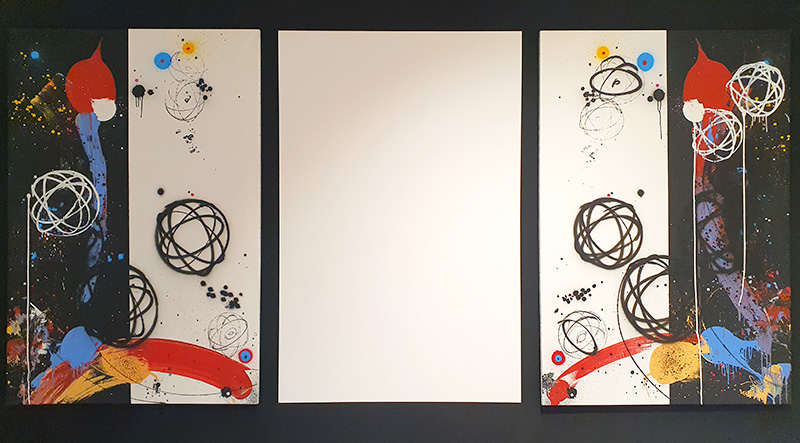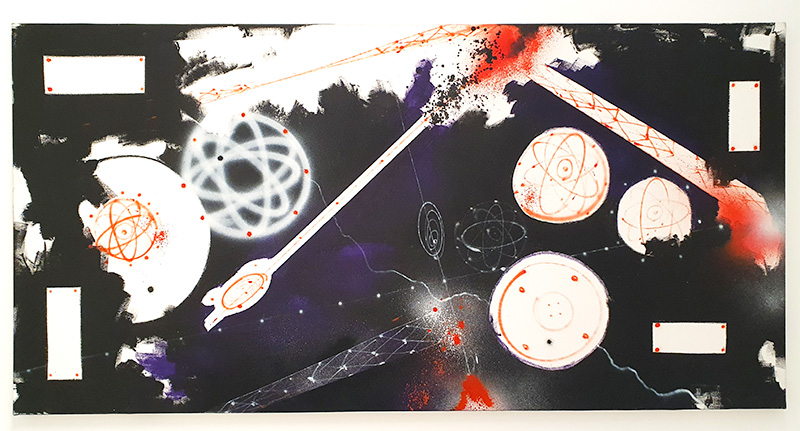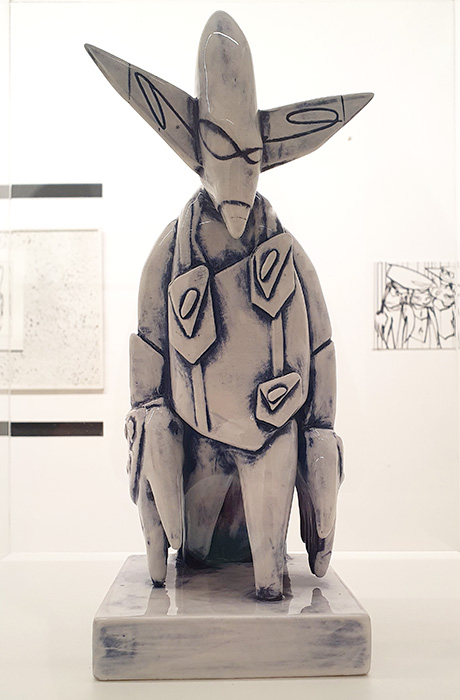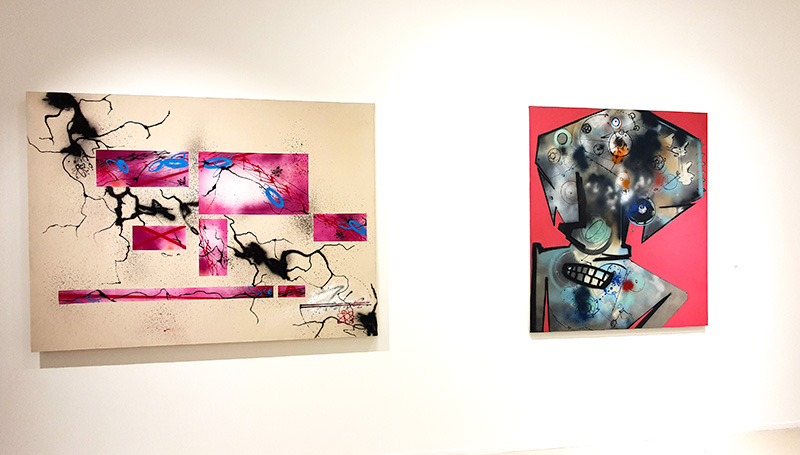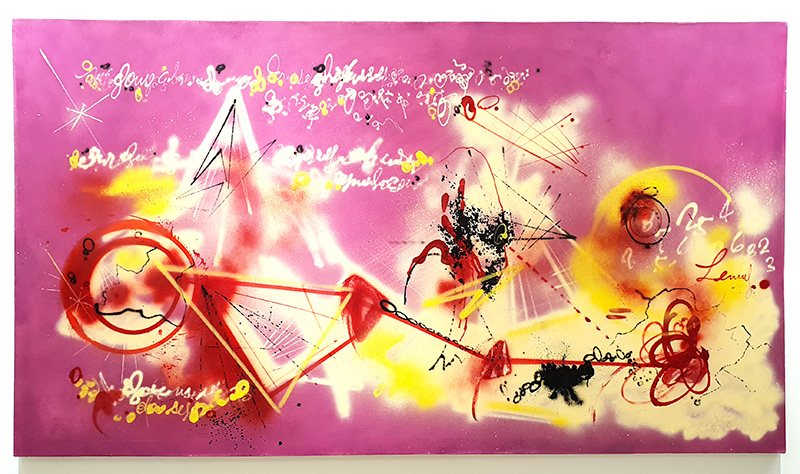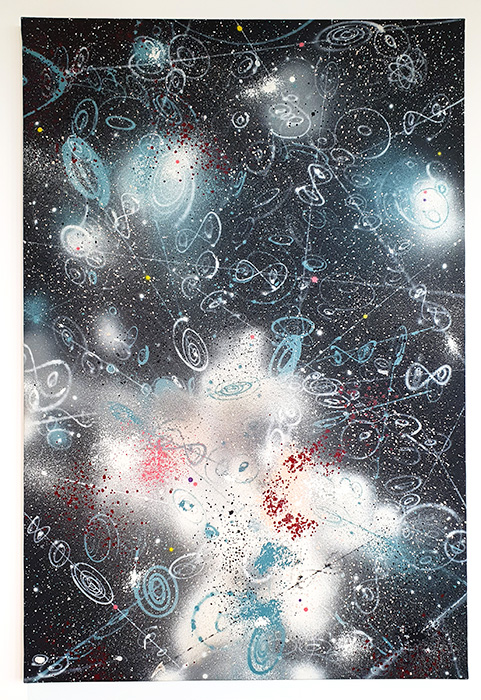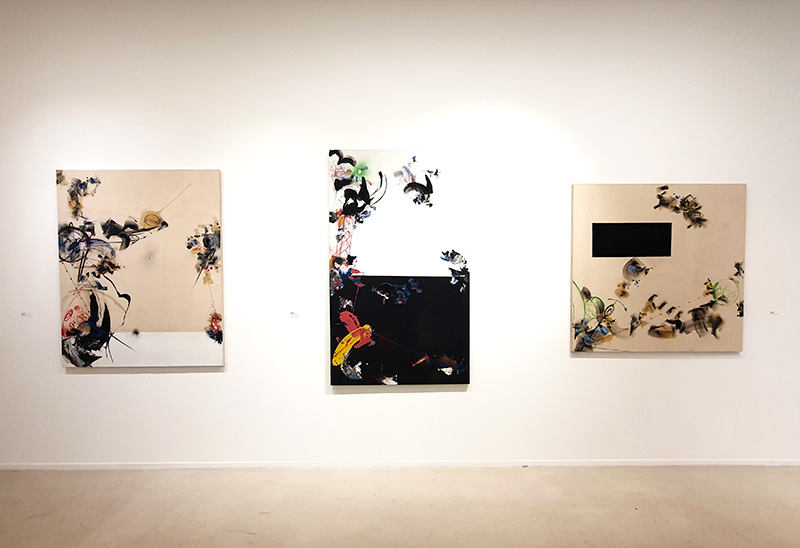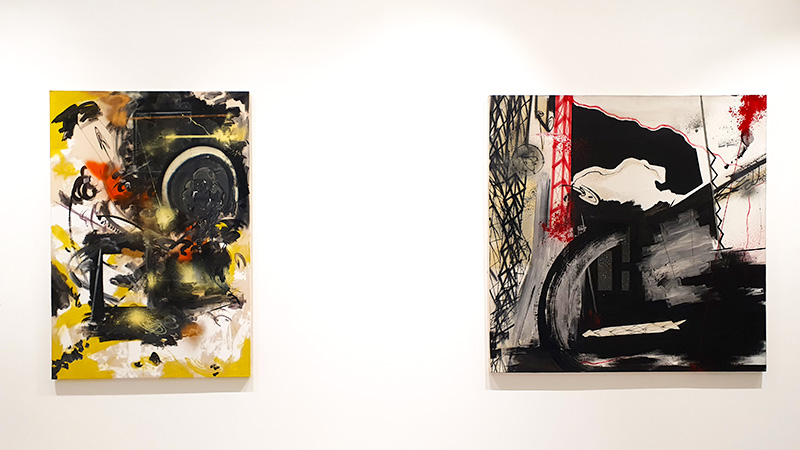Until October 19th, La Fab – Fondation agnès b. in Paris presents a retrospective of graffiti legend Futura2000. The show highlights works from agnès b.’s collection, tracing his journey from the New York subways to the contemporary art world.
Leonard Hilton McGurr, better known by his graffiti name Futura2000, began painting on the streets of New York in the early 1970s, during the formative years of the subway graffiti movement. At a time when most graffiti artists focused on stylized lettering and name-writing, Futura broke with tradition by introducing abstraction into a letter-based subculture. His pioneering work laid the groundwork for an entirely new visual language within graffiti.
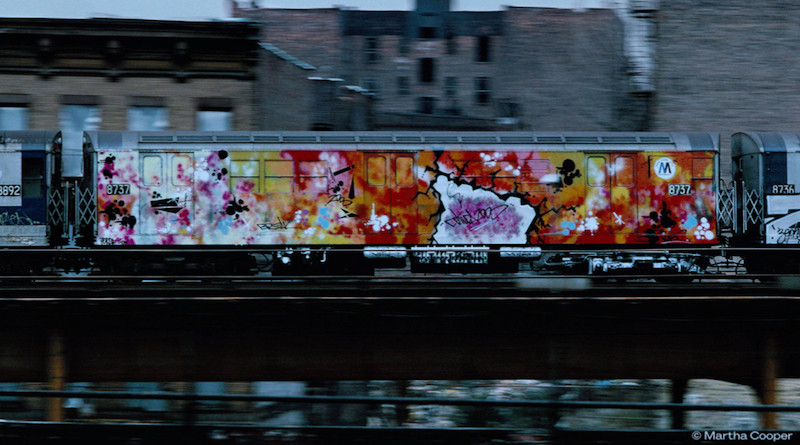
What set Futura2000 apart was his refusal to be confined by graffiti’s early codes. He experimented with non-representational forms, fluid lines, and space-themed imagery, creating compositions that were more akin to fine art than street vandalism. Deeply influenced by futurism, science fiction, and modernist abstraction, his aesthetic is both atmospheric and precise. Even today, his works remain rooted in this distinctive blend of spontaneous movement, careful detail, and color exploration.
No mystery to the way in which I have approached abstraction: Accident.
Futura2000
His work explores themes of speed, movement, and technology, as well as the evolving landscape of the contemporary city — all while maintaining a distinctly painterly quality. Color plays a vital role in Futura’s compositions, not just as decoration but as a structural force. He favors intense, saturated tones and sharp contrasts to generate visual tension between background layers and the floating forms that appear to project outward. Rather than simply layering color, he builds complexity through overlapping planes, translucent effects, and shifting perspectives, giving his works a sense of depth and movement.
His early notoriety came from this radical reimagining of graffiti. But it was in the 1980s that he reached a broader audience. One of his most iconic creations, Pointman—a faceless, spaceman-like figure—debuted on the cover art for the British music group UNKLE. The success of that album launched Pointman into cult status, sparking a series of collectible figures and collaborations across fashion, music, and product design.
While Futura2000 describes himself as self-taught—his formation coming from what he calls “the subway school”—his visual language has continued to evolve. His current practice, often rendered on canvas, blends aerosol finesse, energetic motion, and refined restraint. Characterized by bold color fields, masterful use of negative space, and impossibly fine spray lines, his style remains unmatched in both graffiti and contemporary abstraction.
Over the decades, Futura2000’s influence has extended beyond street art. In the early 1980s, he toured Europe with The Clash, painting live on stage and designing the cover for their single “This Is Radio Clash.” This collaboration not only brought his work to a wider audience, but also played a pivotal role in introducing graffiti culture to Europe, at a time when the movement was still largely confined to New York City. In 2011, his work was featured in the landmark exhibition “Art in the Streets” at MOCA in Los Angeles, cementing his legacy as one of graffiti’s most visionary artists.
From Subway to Space: Futura2000’s Paris Exhibition from the agnès b. Collection at La Fab
Running until October 19th, 2025, “Futura2000 dans la collection agnès b.” is a sweeping retrospective that traces the artist’s trajectory from the New York subways to the walls of major galleries and institutions. Hosted at La Fab, the cultural space founded by agnès b. in Paris’s 13th arrondissement, the exhibition brings together more than 60 key works from her personal collection — a collection she has built over decades, now comprising over 5,000 pieces spanning photography, painting, sculpture, sound, video, and installation.
At the heart of the show are Futura2000’s studio works: spray-painted compositions that feature floating orbs, sci-fi figures, and gestural, kinetic lines. His visual language — born on the streets but shaped by abstraction, futurism, and science fiction — bridges graffiti and contemporary painting. The exhibition vividly captures how Futura turned graffiti into something wholly original: expressive, non-representational, and rich with motion and atmosphere.
La Fab presents the agnès b. collection through thematic exhibitions that reflect her lifelong support of artists who defy categorization. A pioneer in championing street art in Europe, agnès b. first exhibited Futura’s work in 1989, initiating a long-standing collaboration grounded in mutual respect and a shared interest in art that is both raw and refined, personal and political.
The retrospective spans over four decades, featuring works produced between 1984 and 2025. It reveals how Futura’s practice remains deeply engaged with the social realities of his time. Beyond the aesthetic experimentation, his paintings carry critical reflections on police violence, systemic racism, and the oppression of minorities, using color and form to confront political and social issues head-on. His art speaks in a visual language that is both poetic and urgent — where formal innovation meets civic engagement.
The show also reflects Futura2000’s lasting influence beyond the traditional art world. His collaborations with Nike, Levi’s, Supreme, Uniqlo, BMW, and Louis Vuitton are not framed as commercial ventures but as extensions of his visual philosophy. Among the highlights is the presence of Pointman, his now-iconic sci-fi character first seen on the cover of UNKLE’s Psyence Fiction. Pointman later became a collectible toy produced with Bathing Ape, Nike, and Medicom, eventually inspiring the launch of Futura’s own brand: Futura Laboratories.
One of my personal highlights from the exhibition is a behind-the-scenes video showing Futura at work as he prepares for a show. It offers a look at how the physicality of graffiti continues to shape his process. His movements — crouching, stretching, reaching in unconventional ways — recall the unorthodox gestures of a graffiti writer in the city. In this video, Futura spray-paints a canvas from above, holding the can upside down — a signature move that blends control and improvisation, and illustrates the ongoing dialogue between his street roots and studio work.
This retrospective doesn’t simply document Futura2000’s evolution — it immerses viewers in his world. It offers a rare opportunity to grasp the full range of his work, from large-scale paintings to global collaborations, and to understand the vision of an artist who has consistently redefined the boundaries of graffiti. Whether you’re familiar with his legacy or encountering it for the first time, this exhibition is both intellectually resonant and visually electrifying.
